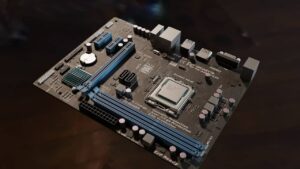
The Building Blocks of Your PC: A Guide to Understanding Input, Output, and Storage Devices in Computers
Do you ever hear people talk about input and output devices like they’re inside some secret club? Are you baffled when someone talks about RAM and ROM memory but doesn’t bother to explain what it is or does?
You don’t have to feel left behind. Technology exists to make our lives easier, not confuse us, so here is your chance to be on the inside track and learn the building blocks of a computer.
This blog will discuss input, output and storage devices with simple enough language that you will not get lost in tech jargon. With this knowledge you can better understand why your PC works the way it does.
Given that computers have become an integral part of our everyday lives, understanding their various components can be helpful in troubleshooting issues and upgrading the system. The three major parts of a computer system—input, output, and storage devices—will all be discussed in this blog. We’ll go over these parts’ roles, quirks, and significance for overall computer system performance.
Input Devices
Any computer system must have input devices because they enable users to interact with computers by giving them commands and data. The most popular input gadgets include, among others, keyboards, mice, touchpads/touch screens, scanners, and mics. These components are essential to the general functionality of the computer because they are each made to carry out particular functions.
The keyboard is the primary input device used to enter text and numbers into a computer system. Keyboards can be either wired or wireless and feature different layouts depending on the region and language. Mice and touchpads are used to navigate the computer’s graphical user interface (GUI) and interact with objects on the screen. Scanners and microphones allow users to input data into the computer in the form of images and sound, respectively. Overall, input devices are critical in enabling users to interact with computers and perform various tasks.
Output Devices
Output devices are the counterparts of input devices, as they convert electronic information into human-readable or perceivable output. These gadgets might include, among other things, screens, printers, projectors, and speakers. The display, which shows text, images, and videos created by the computer’s software, is the most prevalent output component in a computer. From tiny screens on smartphones and tablets to enormous high-definition monitors used for gaming and artistic work, displays come in a variety of shapes and resolutions. Some displays may also have touch capability, allowing users to interact with the computer using gestures and touch commands.
Printers are another essential output device used in homes, offices, and other industries to produce hard copies of electronic documents. On the other hand, projectors are helpful in boardrooms, home theatres, and classrooms because they can show large images or videos on a screen or wall. Last but not least, audio or sound effects generated by computer software are transmitted through speakers or headphones. Speakers appear in a variety of shapes and sizes, including standalone speakers, Bluetooth-enabled portable speakers, and speakers built into laptops and computer displays.
Storage Devices
Storage devices are crucial components of any computer system, as they allow for the long-term storage and retrieval of data. The three most common types of storage devices are:
- HDDs- Hard Disc Drives
- SSD- Solid State Drives
- USB flash drives
HDDs consist of spinning disks that store data magnetically and are usually found on desktop computers and laptops.
They have been around for a while and are renowned for having a lot of storage and being reasonably inexpensive per GB. However, SSDs, which keep data using flash memory technology, are renowned for their quick read and write speeds as well as their sturdiness and dependability. They are frequently discovered in notebooks, ultrabooks, and some desktop computers. Last but not least, USB flash discs are compact, portable storage gadgets that connect to a computer’s USB port. They are frequently used to store and transport crucial data or to move files between computers.
The right storage option for your computer will rely on your needs and financial constraints. A Hard Disk Drive is a reliable option if you need a lot of storage space. However, SSDs are a good choice if you want faster startups and load times. If you need to transport sensitive information or transfer files between computers, USB flash drives are a practical choice. It’s essential to remember that you can use different storage types in the same computer system to benefit from each type’s advantages.
Wired Vs. Wireless
Another crucial aspect to take into account when choosing input, output, and storage devices is whether or not they are connected or wireless. Wireless devices connect using Bluetooth or other wireless technologies, whereas wired devices are physically connected to the computer, usually through USB or other ports.
With no interference from other wireless signals, wired connections typically provide a more dependable and stable link. Since they draw electricity from the computer, they are also battery-free. However, because they can restrict mobility and necessitate close proximity to the computer, wired devices can be less convenient to use.
Since they are not physically attached to the computer, wireless devices provide greater mobility and location freedom. Due to the lack of cords or cables, they may be more practical to use. They could, however, be subject to interference from other wireless transmissions and could need recharging or batteries. The user’s requirements and preferences will ultimately determine whether to use wired or wireless devices.
Conclusion
In summation, the fundamental components of any computer system are input, output, and storage devices. There are many options available to suit various tastes and needs, ranging from conventional wired keyboards and mice to wireless choices and the most recent solid-state drives. It is crucial to take into account aspects like compatibility, speed, capacity, and expense when choosing these devices. You can do this to make sure your computer operates at its peak efficiency and offers you the usefulness and productivity you require.

